This first photo shows the area where PP59 was sampled. You can see the corner of a flattened, sheath-like fold in this photograph. the axial area is the sample PP59. I have taken slabs of the axis and there is beautiful viscous folding of different layers, some cuspate-lobate structure between fine layers and coarse layers. I began to trace these layers from the slab to make a sketch because as Toshi-san said in his email, "it's too dark to imagine inside". I will post the tracing here when I have a chance to scan it. 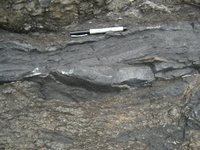
This next two photos show another large feature which may be a sheath-like fold but we are not sure because we have not seen the layers bending around the axis. You can see here the deformation of layers of different flow properties at the left side of the fold. Also in the second photo you can see where the big layer of "black material" thins down at the edge of the outcrop. You can see the sandstone hanging wall and argillite cataclasite footwall.
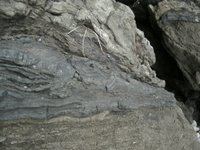
Finally, here are two more photos from the outcrop. These are taken westward (to the left) of the previous photos. We noticed in particular the beautiful cross-cutting of the cataclasite footwall, the banding and folding which is very fluid-like in the left photo. In the right photo notice how there are flakes or sheets of cataclasite material in between layers of black material, very planar. 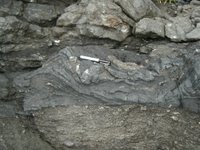

I am looking forward to hearing your impressions of these photos.
 FUNAMUSHI
FUNAMUSHI
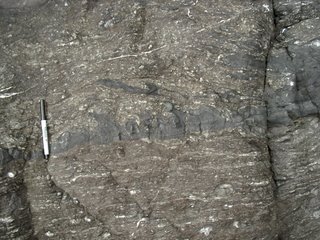
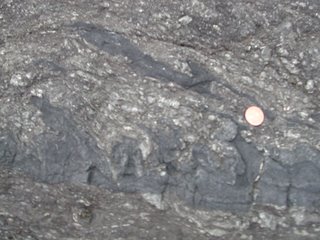







0 Comments:
Post a Comment
<< Home